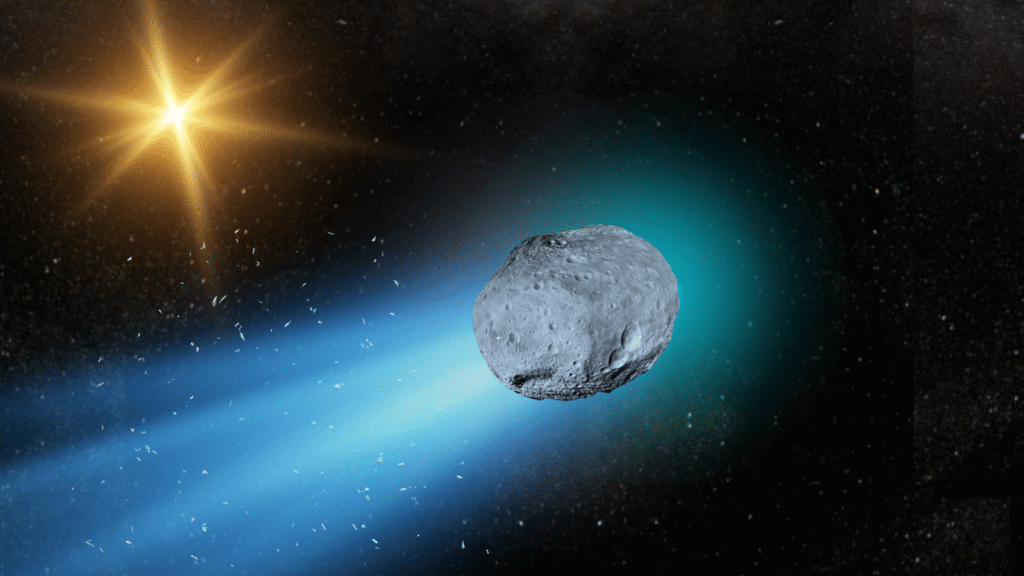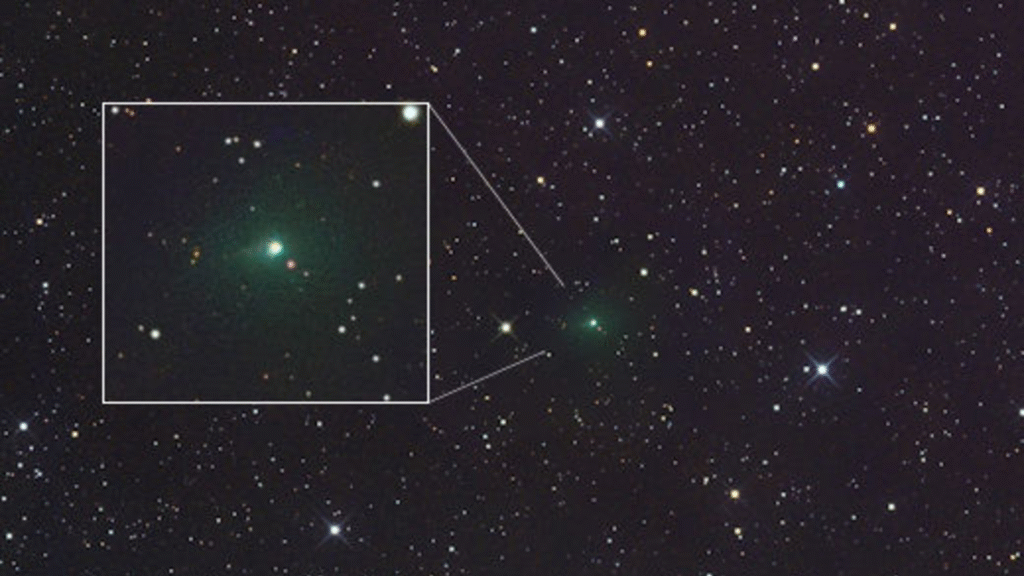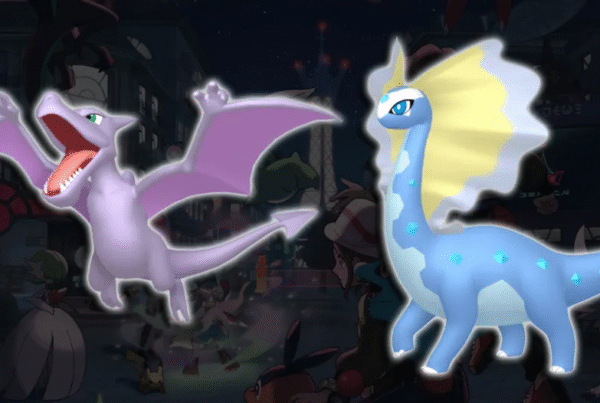Introduction
In mid‑2025, astronomers made a sensational discovery: a comet not bound to our Solar System, but hurtling through it from the depths of interstellar space. Named 3I/ATLAS, this visitor offers a rare opportunity to study material from another star system up close. This article delves into what we know so far — its discovery, trajectory, composition, what makes it unique, and why scientists are closely watching its path.

What is 3I/ATLAS?
- The object is officially designated 3I/ATLAS (also known as C/2025 N1 (ATLAS)). (Wikipedia)
- The “3I” stands for “third interstellar object” — meaning this is the third known object from outside our Solar System to pass through. (NASA Science)
- It was discovered on 1 July 2025 by the ATLAS (Asteroid Terrestrial‑impact Last Alert System) survey in Chile. (NASA Science)
- Soon after discovery, observations were found in archival data (“precovery” images) extending visibility prior to July. (NASA Science)

Trajectory & Orbit
- Unlike typical comets whose orbits are elliptical (bound to the Sun), 3I/ATLAS follows a hyperbolic trajectory, indicating an unbound, interstellar path. (Wikipedia)
- Its closest approach to the Sun (perihelion) is expected around 29–30 October 2025, at about 1.36–1.4 astronomical units (AU) from the Sun (i.e., between the orbits of Earth and Mars). (Wikipedia)
- The closest it will come to Earth will be about 1.8 AU (≈ 270 million km). That means it does not pose any threat to Earth. (NASA Science)
- During its inbound leg, it passed near Mars on 3 October 2025, giving Mars orbiters an opportunity for observation. (NASA Science)
- After passing the Sun, it will head outward, eventually passing by Jupiter’s region in early 2026. (NASA Science)

Size, Composition & Physical Properties
Because it is distant and faint, many properties are estimates or upper / lower bounds:
- The nucleus (solid core) size is estimated between ~0.32 km up to ~5.6 km in diameter. (Wikipedia)
- Observations by the Hubble Space Telescope (on 21 July 2025) revealed a “teardrop‑shaped cocoon” of dust and gas (coma) around the nucleus. (NASA Science)
- Spectroscopy from telescopes like JWST found that its gas coma is dominated by carbon dioxide (CO₂), with detectable H₂O (water), CO, and dust. (arXiv)
- Its CO₂/H₂O mixing ratio is unusually high (≈ 8.0 ± 1.0) compared to typical comets, suggesting a possibly CO₂-rich nucleus or different thermal processing history. (arXiv)
- Evidence of water outgassing has also been detected (via OH emission) at distances beyond 3 AU, which is relatively far for typical comet activity. (arXiv)
- Polarimetric studies (measure of how light scatters) show that 3I/ATLAS has extreme negative polarization behavior, more intense than typical Solar System comets or asteroids — hinting at unique surface / dust properties. (arXiv)
- Photometric data (brightness over time) shows evolution in color and light curve slopes, interpreted as changing dust / gas emission behaviors as it approaches the Sun. (arXiv)

What Makes 3I/ATLAS Special?
- Interstellar Origin
Being from outside the Solar System, 3I/ATLAS carries material that could reflect conditions and chemistry from another stellar system — possibly billions of years old. - Strong CO₂ Dominance
Its unusual carbon dioxide dominance sets it apart from many known comets. This may suggest a formation environment richer in CO₂ or different thermal history. (arXiv) - Polarimetric Uniqueness
The polarization signature (light scattering behavior) is more extreme than known comets or asteroids, hinting at dust particles or surfaces unfamiliar in Solar System bodies. (arXiv) - High Activity at Large Distance
Detecting water (via OH) activity beyond 3 AU is noteworthy — many comets become active closer in. (arXiv) - Rare Opportunity for Planetary Observations
Its close pass by Mars allows spacecraft already orbiting Mars to capture data, providing multiple vantage points beyond Earth-based telescopes. (NASA Science) - Scientific “Window” Temporality
Because it will pass behind the Sun (as seen from Earth), observations from Earth telescopes will become difficult near perihelion, making pre‑Sun and post‑Sun windows extremely valuable for capturing data. (NASA Science)
Myths, Speculation & Public Interest
- Some speculative commentary in public media has raised the possibility (though without strong evidence) that 3I/ATLAS could be alien technology or an artificial probe. However, mainstream scientific consensus treats it as a natural interstellar comet. (The Times of India)
- Social media and news outlets have circulated dramatic claims about potential Earth impact or extraordinary hidden agendas — but astronomers assure that its trajectory leaves no threat to Earth. (NASA Science)
What Can We Learn From 3I/ATLAS?
- Comparative Planetology: By comparing its composition and behavior to Solar System comets, scientists can probe how different or similar planet-forming environments are elsewhere.
- Chemical Fingerprints of Exo‑Systems: The dominance of CO₂ (and relative water content) may hint at different disk chemistry or bombardment histories in its home star system.
- Dust / Particle Physics: The dust behavior, polarization, and coma dynamics may expand our understanding of how cometary dust evolves in extreme conditions.
- Early Galaxy Clues: Some trajectory modeling suggests 3I/ATLAS might originate from a region between the Milky Way’s thick and thin disks, possibly making it very old (on astrophysical timescales). (Live Science)
Timeline & Observation Points
| Stage | Date / Period | Notes / Observations |
|---|---|---|
| Discovery | 1 July 2025 | Detected by the ATLAS survey in Chile (NASA Science) |
| Precovery & Extended Observations | June 2025 | Archival images extended detection before official discovery (NASA Science) |
| Mars Flyby | 3 October 2025 | Closest approach to Mars; Mars orbiters track activity (NASA Science) |
| Perihelion (closest to Sun) | ~29–30 October 2025 | ~1.36–1.4 AU distance (Wikipedia) |
| Earth Closest Approach | ~December 2025 | ~1.8 AU separation (~270 million km) (NASA Science) |
| Exit / Jupiter Region | Early 2026 | On its way outward past Jupiter’s orbit (NASA Science) |
Tips for Publishing on Your Website (SEO & Readability)
- Keyword placement: Use “Interstellar Comet 3I/ATLAS”, “3I/ATLAS comet facts”, “interstellar comet 2025” in headings, meta title, meta description.
- Alt text for images: For each image, include descriptive alt text like “Hubble image of interstellar comet 3I/ATLAS showing coma”
- Internal links: Link to related articles (e.g. on comets, Solar System, astronomy) on your site to boost SEO and keep readers engaged.
- Cite trusted sources: Use citations from NASA, research papers, reputable astronomy outlets to build authority.
- Update over time: As new observations come in (post‑perihelion, new spectra, new modeling), update the article to keep it fresh — search engines favor fresh content.
- Readable structure: Use subheadings, short paragraphs, bullet lists (as above), to make the content scannable for readers.



